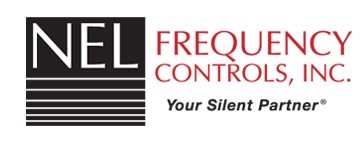Floriculture Market Status and Trend Analysis 2017-2026
- Report Code : 99S2215043
- Published On: Dec, 2020
- Category : Agriculture
- Pages : 120
-
Summary
Further key aspects of the report indicate that:
Chapter 1: Research Scope: Product Definition, Type, End-Use & Methodology
Chapter 2: Global Industry Summary
Chapter 3: Market Dynamics
Chapter 4: Global Market Segmentation by region, type and End-Use
Chapter 5: North America Market Segmentation by region, type and End-Use
Chapter 6: Europe Market Segmentation by region, type and End-Use
Chapter 7: Asia-Pacific Market Segmentation by region, type and End-Use
Chapter 8: South America Market Segmentation by region, type and End-Use
Chapter 9: Middle East and Africa Market Segmentation by region, type and End-Use.
Chapter 10: Market Competition by Companies
Chapter 11: Market forecast and environment forecast.
Chapter 12: Industry Summary.
The global Floriculture market has the potential to grow with xx million USD with growing CAGR in the forecast period from 2021f to 2026f.
Based on the type of product, the global Floriculture market segmented into
Cut Flowers
Bedding Plants
Potted Plants
Others
Based on the end-use, the global Floriculture market classified into
Personal Use
Gift
Conference & Activities
Others
Based on geography, the global Floriculture market segmented into
North America [U.S., Canada, Mexico]
Europe [Germany, UK, France, Italy, Rest of Europe]
Asia-Pacific [China, India, Japan, South Korea, Southeast Asia, Australia, Rest of Asia Pacific]
South America [Brazil, Argentina, Rest of Latin America]
Middle East & Africa [GCC, North Africa, South Africa, Rest of Middle East and Africa]
And the major players included in the report are
Dümmen Orange
Syngenta Flowers
Finlays
Beekenkamp
Karuturi
Oserian
Selecta One
Washington Bulb
Arcangeli Giovanni & Figlio
Carzan Flowers
Rosebud
Kariki
Multiflora
Karen Roses
Harvest Flower
Queens Group
Ball Horticultural
-
With tables and figures helping analyze worldwide Floriculture market, this research provides key statistics on the state of the industry and is a valuable source of guidance and direction for companies and individuals interested in the market.
1 RESEARCH SCOPE1.1 Research Product Definition
1.2 Research Segmentation
1.2.1 Product Type
1.2.2 Main product Type of Major Players1.3 Demand Overview
1.4 Research Methodology
2 GLOBAL FLORICULTURE INDUSTRY2.1 Summary about Floriculture Industry
2.2 Floriculture Market Trends
2.2.1 Floriculture Production & Consumption Trends
2.2.2 Floriculture Demand Structure Trends2.3 Floriculture Cost & Price
3 MARKET DYNAMICS3.1 Manufacturing & Purchasing Behavior in 2020
3.2 Market Development under the Impact of COVID-19
3.2.1 Drivers
3.2.2 Restraints
3.2.3 Opportunity
3.2.4 Risk
4 GLOBAL MARKET SEGMENTATION4.1 Region Segmentation (2017 to 2021f)
4.1.1 North America (U.S., Canada and Mexico)
4.1.2 Europe (Germany, UK, France, Italy, Rest of Europe)
4.1.3 Asia-Pacific (China, India, Japan, South Korea, Southeast Asia, Australia, Rest of Asia Pacific)
4.1.4 South America (Brazil,, Argentina, Rest of Latin America)
4.1.5 Middle East and Africa (GCC, North Africa, South Africa, Rest of Middle East and Africa)4.2 Product Type Segmentation (2017 to 2021f)
4.2.1 Cut Flowers
4.2.2 Bedding Plants
4.2.3 Potted Plants
4.2.4 Others4.3 Consumption Segmentation (2017 to 2021f)
4.3.1 Personal Use
4.3.2 Gift
4.3.3 Conference & Activities
4.3.4 Others
5 NORTH AMERICA MARKET SEGMENT5.1 Region Segmentation (2017 to 2021f)
5.1.1 U.S.
5.1.2 Canada
5.1.3 Mexico5.2 Product Type Segmentation (2017 to 2021f)
5.2.1 Cut Flowers
5.2.2 Bedding Plants
5.2.3 Potted Plants
5.2.4 Others5.3 Consumption Segmentation (2017 to 2021f)
5.3.1 Personal Use
5.3.2 Gift
5.3.3 Conference & Activities
5.3.4 Others5.4 Impact of COVID-19 in North America
6 EUROPE MARKET SEGMENTATION6.1 Region Segmentation (2017 to 2021f)
6.1.1 Germany
6.1.2 UK
6.1.3 France
6.1.4 Italy
6.1.5 Rest of Europe6.2 Product Type Segmentation (2017 to 2021f)
6.2.1 Cut Flowers
6.2.2 Bedding Plants
6.2.3 Potted Plants
6.2.4 Others6.3 Consumption Segmentation (2017 to 2021f)
6.3.1 Personal Use
6.3.2 Gift
6.3.3 Conference & Activities
6.3.4 Others6.4 Impact of COVID-19 in Europe
7 ASIA-PACIFIC MARKET SEGMENTATION7.1 Region Segmentation (2017 to 2021f)
7.1.1 China
7.1.2 India
7.1.3 Japan
7.1.4 South Korea
7.1.5 Southeast Asia
7.1.6 Australia
7.1.7 Rest of Asia Pacific7.2 Product Type Segmentation (2017 to 2021f)
7.2.1 Cut Flowers
7.2.2 Bedding Plants
7.2.3 Potted Plants
7.2.4 Others7.3 Consumption Segmentation (2017 to 2021f)
7.3.1 Personal Use
7.3.2 Gift
7.3.3 Conference & Activities
7.3.4 Others7.4 Impact of COVID-19 in Europe
8 SOUTH AMERICA MARKET SEGMENTATION8.1 Region Segmentation (2017 to 2021f)
8.1.1 Brazil
8.1.2 Argentina
8.1.3 Rest of Latin America8.2 Product Type Segmentation (2017 to 2021f)
8.2.1 Cut Flowers
8.2.2 Bedding Plants
8.2.3 Potted Plants
8.2.4 Others8.3 Consumption Segmentation (2017 to 2021f)
8.3.1 Personal Use
8.3.2 Gift
8.3.3 Conference & Activities
8.3.4 Others8.4 Impact of COVID-19 in Europe
9 MIDDLE EAST AND AFRICA MARKET SEGMENTATION9.1 Region Segmentation (2017 to 2021f)
9.1.1 GCC
9.1.2 North Africa
9.1.3 South Africa
9.1.4 Rest of Middle East and Africa9.2 Product Type Segmentation (2017 to 2021f)
9.2.1 Cut Flowers
9.2.2 Bedding Plants
9.2.3 Potted Plants
9.2.4 Others9.3 Consumption Segmentation (2017 to 2021f)
9.3.1 Personal Use
9.3.2 Gift
9.3.3 Conference & Activities
9.3.4 Others9.4 Impact of COVID-19 in Europe
10 COMPETITION OF MAJOR PLAYERS10.1 Brief Introduction of Major Players
10.1.1 Dümmen Orange
10.1.2 Syngenta Flowers
10.1.3 Finlays
10.1.4 Beekenkamp
10.1.5 Karuturi
10.1.6 Oserian
10.1.7 Selecta One
10.1.8 Washington Bulb
10.1.9 Arcangeli Giovanni & Figlio
10.1.10 Carzan Flowers
10.1.11 Rosebud
10.1.12 Kariki
10.1.13 Multiflora
10.1.14 Karen Roses
10.1.15 Harvest Flower
10.1.16 Queens Group
10.1.17 Ball Horticultural10.2 Floriculture Sales Date of Major Players (2017-2020e)
10.2.1 Dümmen Orange
10.2.2 Syngenta Flowers
10.2.3 Finlays
10.2.4 Beekenkamp
10.2.5 Karuturi
10.2.6 Oserian
10.2.7 Selecta One
10.2.8 Washington Bulb
10.2.9 Arcangeli Giovanni & Figlio
10.2.10 Carzan Flowers
10.2.11 Rosebud
10.2.12 Kariki
10.2.13 Multiflora
10.2.14 Karen Roses
10.2.15 Harvest Flower
10.2.16 Queens Group
10.2.17 Ball Horticultural10.3 Market Distribution of Major Players
10.4 Global Competition Segmentation
11 MARKET FORECAST11.1 Forecast by Region
11.2 Forecast by Demand
11.3 Environment Forecast
11.3.1 Impact of COVID-19
11.3.2 Geopolitics Overview
11.3.3 Economic Overview of Major Countries
12 REPORT SUMMARY STATEMENT
-
The Floriculture Market has been segregated into various crucial divisions including applications, types, and regions. Each market segment is intensively studied in the report contemplating its market acceptance, worthiness, demand, and growth prospects. The segmentation analysis will help the client to customize their marketing approach to have a better command of each segment and to identify the most prospective customer base.
Report Objectives / Segmentation Covered :
By Companies / players:
By Regions:
By Type:
By Application:
Frequently asked questions(FAQ's):
As manufacturers prepare to scale up, Floriculture companies must be clear and transparent about the impact of such volatility on the balance sheet.
In 2024, the Floriculture Market share surpassed USD xx million, and between 2025 and 2030, it will grow at a CAGR of yy%.
Consumer behavior changes will reshape the entire decision-making process and companies in the Floriculture Industry will need to adapt quickly.
The Floriculture study focuses on shifting market dynamics, geopolitical and regulatory regulations, and key players' strategies to carefully analyze demand at risk across multiple industry categories.















